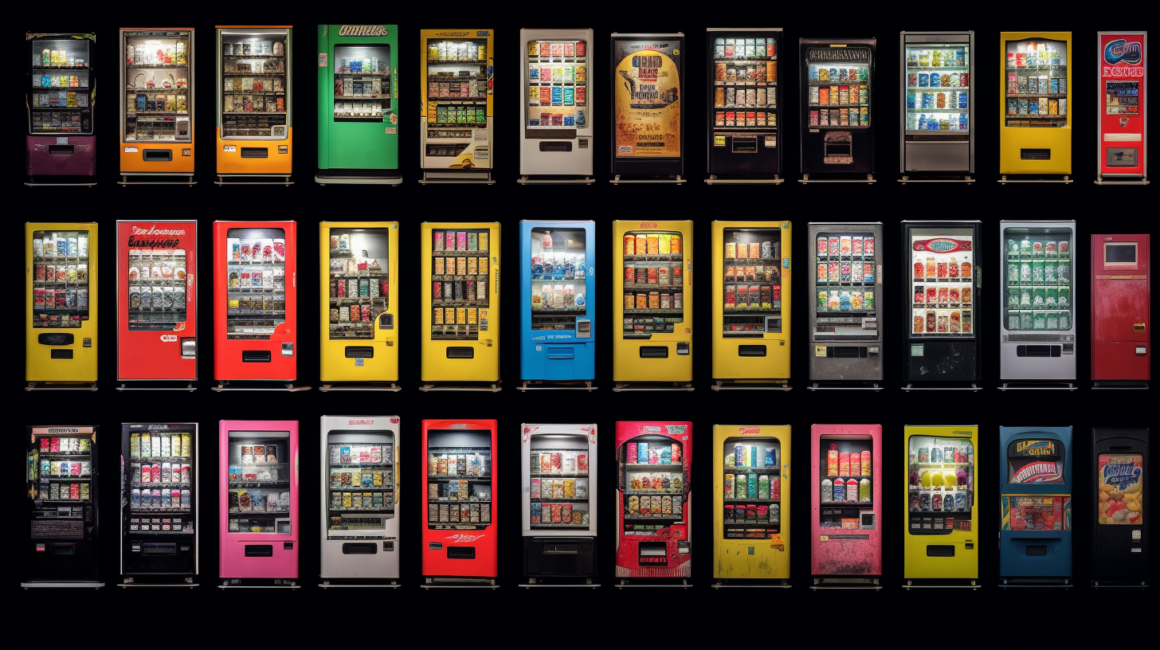You might be surprised to learn that the roots of vending machines stretch back thousands of years and span cultures across the globe. Let’s look at the history of these machines, tracing their origins from ancient civilizations to the high-tech marvels we interact with today.
The Dawn of Automated Vending: Ancient Times
The concept of vending machines has been around much longer than one might initially think. The first recorded vending machine was invented by a Greek mathematician and engineer named Hero of Alexandria in the 1st century AD. His invention was a holy water dispenser used in Egyptian temples. Patrons could insert a coin into the machine, releasing a fixed amount of holy water. This was made possible by a simple mechanism: the coin would fall onto a pan attached to a lever. The coin’s weight would tilt the lever, unsealing a valve and allowing the holy water to flow.
The Age of Industrialization: A Leap Forward
Fast forward to the 19th century, during the Industrial Revolution, when technological innovations took vending machines to the next level. In 1883, Percival Everitt invented the first modern vending machine in England. His machine dispensed postcards, envelopes, and notepaper, mainly in railway stations and post offices. The success of Everitt’s invention led to the birth of vending machine companies and set the foundation for the future of this automated form of retail.
Around this time, vending machines also started appearing in the United States. The first vending machine in the U.S. was built by the Thomas Adams Gum Company in 1888. Placed in New York City subway platforms, these machines sold Tutti-Frutti gum. Vending machines began to spread across America, dispensing a wide range of products like cigars, stamps, and even fishing tackle!
The 20th Century: The Golden Age of Vending Machines
The 20th century witnessed an explosion in the popularity and functionality of vending machines. In 1926, William Rowe invented a cigarette vending machine that quickly found its way into various establishments. The 1930s and 40s saw the emergence of vending machines that could chill products, opening up a whole new array of possibilities. Machines could now sell cold beverages and even ice cream, which required refrigeration.
The Coca-Cola vending machine was one of this period’s most iconic vending machines. First appearing in the 1930s, these machines not only provided a cold beverage but also became a symbol of American culture worldwide. By the 1950s, vending machines sold everything from hot coffee to umbrellas. Japan, also a significant player in vending machine history, introduced machines that dispensed hot and cold canned coffee, significantly impacting the country’s coffee culture.
Modern Times: Vending Machines in the 21st Century
Today, vending machines are more intelligent and more versatile than ever. They offer various goods—from electronics and books to food and personal care items. The advent of the Internet of Things (IoT) and artificial intelligence has led to the rise of smart vending machines. These machines can engage consumers through touchscreens, mobile apps, and facial recognition technology. They can also provide businesses with real-time inventory updates and consumer behavior analytics.
Unique vending machines have popped up worldwide, displaying the limitless potential of this form of retail. For instance, in Singapore, vending machines sell freshly cooked crab, while Japan boasts machines that dispense hot ramen noodles. You can even find vending machines in the United States that sell cars!
Final Thoughts
The history of vending machines is a tale of technological innovation and a reflection of cultural shifts and consumer demands. From the simple coin-operated holy water dispensers of ancient Egypt to the touchscreen-enabled smart vending machines of today, these devices have adapted and evolved to meet the needs of society. The next time you grab a soda or a snack from a vending machine, take a moment to appreciate the rich history and complex mechanics that make it all possible.
We’ve come a long way, but the journey is far from over. Who knows what the future holds for vending machines? Maybe they’ll soon be vending 3D-printed products or even human essentials like clean water in underprivileged areas. The possibilities are endless, and that’s what makes the history of vending machines so exciting.



Leave a Reply